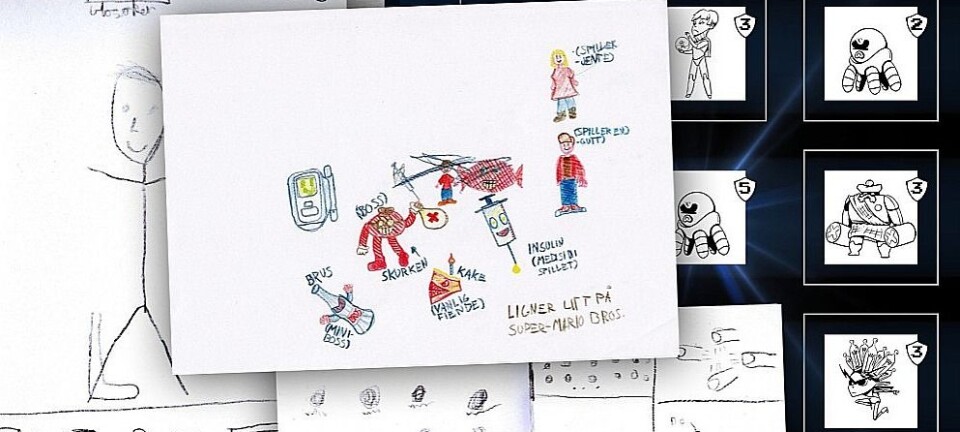This article was produced and financed by Norwegian centre for E-health research - read more

Twitter revealed a more positive attitude towards type 1 diabetes
Far more hearts, smiles and encouraging words were used when type 1 diabetes was in the tweet, compared to type 2. Researcher Elia Gabarron at the Norwegian Centre for E-health Research took a serious look at smileys.
The researchers analyzed more than 67,000 twitter posts from a week in May 2018. They wanted to investigate how diabetes is referred to in social media.
They analyzed emojis in anonymized twitter messages from, for example, healthcare professionals, relatives or people who themselves have diabetes. In the tweets, the terms "diabetes", "t1d" (type 1 diabetes) or "t2d" (type 2 diabetes) were mentioned.
"I wanted to see if different uses of emojis can say something about how positive or negative twitter users are to the disease," says Elia Gabarron, a researcher at the Norwegian Centre for E-health Research.

Calculates emotions
Together with colleagues, Gabarron completed what is called a sentiment analysis.
The analysis extracts information from natural language using algorithms. It is used in research to systematically identify, quantify and study emotions and subjective information in natural language.
The researchers used an open software that calculates the strength of positive and negative emotions in short texts. The method is used, among other things, to measure political attitudes in a population.
Thus, over seven days, Gabarron and the co-researchers gathered twitter messages that included the previously mentioned words related to diabetes and ended up with 67,421 messages that could be tested.
They chose Twitter because it is possible to download twitter messages, and it is one of the world's largest social media.
Words and emojis in the same class
The algorithm used by the researchers classifies the words into two parts: positive and negative charged words. So when you write three positive words on Twitter, like "congratulate" "joy" or "happiness" - your sentence is categorized as positive. It can also be similar emojis, like the smiley, the clapping hands or the heart sign.
On the other side, words like "hate", "no" or "never" say your message is more negative. Each emoji has a value that counts positively or negatively in the analysis.
"We compared the tweets and found the positive and negative words or emojis that were related to type 1 diabetes and type 2 diabetes," she says.
Positive to type 1
The researchers saw significant differences in how people reacted to type 1 and type 2.
When compared, they found that the tweets related to type 1 diabetes were more positive - and less negative. While the lifestyle-related type 2 was defined by more negative twitter messages.
"There were noticeable differences. There were far more hearts, smileys or encouraging words when "t1d" was in the twitter message, than "t2d", Gabarron says.
Do not know why
Why is that so? Scientists can only speculate, because the messages are anonymised, and no one knows who is behind them.
"For ethical reasons, we do not know whether there are health personnel, relatives or patients who express themselves positively or negatively, depending on the type of diabetes involved. For example, we do not know if patients with type 1 are trying to encourage each other more, and therefore we see many positive twitter messages. Or why we find more negative attitudes about type 2 diabetes," Gabarron explains.
New field
Emoji analysis is quite new in the world of health research. But Gabarron believes it is possible for scientists to find valuable information in the emoji use, and that it is something all people can easily understand.
Like how a smiley makes everything positive. And, that it is contagious.
"If you write something negative with a smile emoticon, it becomes more positive. It is like when everyone around you is feeling down, you will too. The same happens on social media. When many use positive emojis in the discussion of an illness, more people will be in a better mood," Gabarron believes.
"We need to get more positivity around diabetes, also type 2. Maybe health professionals can help spread good mood in social media and thus make people feel better with themselves and their illness. Perhaps it can also bring about lifestyle changes," says Elia Gabarron.
—————
Read the Norwegian version of this article at forskning.no


































